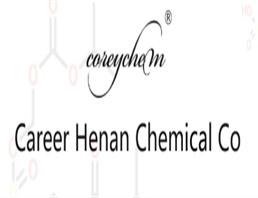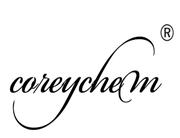Description
Retaspimycin Hydrochloride is a potent and water-soluble inhibitor of Hsp90 with EC50s of 119 nM for both Hsp90 and Grp9.
Related Catalog
Signaling Pathways >> Cell Cycle/DNA Damage >> HSP
Signaling Pathways >> Metabolic Enzyme/Protease >> HSP
Research Areas >> Cancer
Target
HSP90:119 nM (EC50)
GRP94:119 nM (EC50)
In Vitro
Retaspimycin (IPI-504) is a novel and highly soluble analog of 17AAG, an inhibitor of Hsp90. Retaspimycin can abrogate both the unfolded protein response element (UPRE) and ERSE-driven luciferase activity in non-treated U266 and MM.1s cells as well as in Tunicamycin (Tm)-treated cells. The IC50s for the inhibition of reporter gene activity by Retaspimycin are 196±56 nM in U266 and 472±177 nM in MM.1s for UPRE-luc activity and 213±140 nM for the ERSE-driven activity in MM.1s cells. Retaspimycin treatment leads to a dose-dependent decrease of p50ATF6 with EC50 of 237 nM, consistent with the reporter-gene assay. The level of sXBP1 is decreased in the presence of Retaspimycin with an apparent EC50 between 300 nM and 1 μM[1]. Incubation of Retaspimycin (IPI-504) potently suppresses both Akt and MAPKs phosphorylation in both sensitive and Trastuzumab-resistant cells. Total levels of Akt decreased in all 4 cell lines (BT474, SKBR-3, HCC1569, and HCC1569) in a dose-dependent manner. However, levels of total MAPKs are not significantly altered with Retaspimycin treatment[2].
In Vivo
Retaspimycin (IPI-504) and Trastuzumab independently induce tumor regression of Trastuzumab-sensitive BT474 cell-derived xenografts. Xenografts derived from BT474R cells continue to grow in the presence of Trastuzumab but are still sensitive to Retaspimycin. When used in combination, Retaspimycin and Trastuzumab add only marginal benefits to Retaspimycin monotherapy. Retaspimycin (100 mg/kg) as a single agent is more efficacious than Trastuzumab in inhibiting tumor growth in HCC1569 xenografts. The combination is not significantly superior to Retaspimycin used as a single agent[2].
Cell Assay
Hela cells are grown in Dulbecco’s modified Eagle’s medium containing 10% fetal bovine serum, 1 ug/mL streptomycin and 1 ug/mL penicillin. U266 and MM.1s are cultured in RPMI 1640 medium containing 15% fetal bovine serum, 1 mM pyruvate, 1 ug/mL streptomycin, and 1 ug/mL penicillin. All the cell lines are maintained at 37°C in a humidified 5% CO2 atmosphere. Viability studies are performed using the vital mitochondrial function stain Alamar Blue. After cells are incubated in 96-well plates (200 μL) ± Retaspimycin, 20 μL of Alamar Blue is added and incubated for 4-6 h at 37°C. The Alamar Blue reduction is monitored using an Envision plate reader at λEM=544 nm and λEM=590 nm. The ratios obtained from drug-treated cells versus vehicle treated cells are quantified and plotted against drug concentration to give EC50 values. Caspase-3 and 7 activities are detected using the Caspase Glow kit[1].
Animal Admin
Mice[2] For all the experiments, 2×107 cells are injected into the right flanks of 10 mice for each experimental condition. Established tumors are treated with Trastuzumab, Retaspimycin, or the combination as following: Trastuzumab (10 mg/kg in sterile PBS) or sterile PBS (control) is given intraperitoneally twice weekly. Retaspimyci (100 mg/kg) is administered intraperitoneally thrice weekly. Retaspimyci, Trastuzumab, and the combination treatments are tolerable. No significant toxicity is noticed among the treatment arms. Tumor growth is measured with digital calipers as indicated and tumor volume is determined using the formula: (length×width2)×(π/6). At the end of the experiments, the animals are anesthetized with 1.5% isofluorane-air mixture and killed by cervical dislocation. Results are depicted as means of tumor volume±SE.
References
[1]. Patterson J, et al. IPI-504, a novel and soluble HSP-90 inhibitor, blocks the unfolded protein response in multiple myeloma cells. Cancer Chemother Pharmacol. 2008 May;61(6):923-32.
[2]. Scaltriti M, et al. Antitumor Activity of the Hsp90 Inhibitor IPI-504 in HER2-Positive Trastuzumab-Resistant Breast Cancer. Mol Cancer Ther. 2011 May;10(5):817-24.
[3]. Sydor JR, et al. Development of 17-allylamino-17-demethoxygeldanamycin hydroquinone hydrochloride (IPI-504), an anti-cancer agent directed against Hsp90. Proc Natl Acad Sci U S A. 2006 Nov 14;103(46):17408-13. Epub 2006 Nov 7.

 China
China

